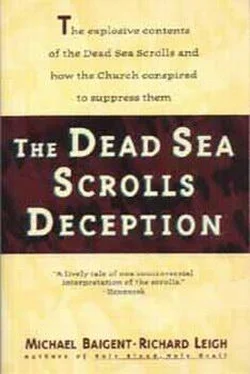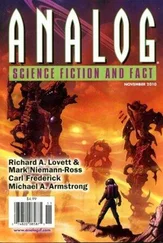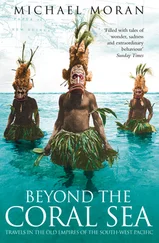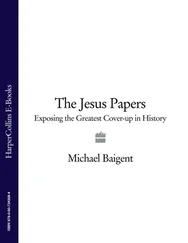In 1966, however, the Rockefeller, with the scrolls it contained, was officially nationalised by the Jordanian government. This move was to have important repercussions. It was also of questionable legality. The museum’s board of trustees did not object, however. On the contrary, the president of the board transferred the museum’s endowment fund from London, where it had been invested, to Amman. Thus the scrolls and the museum housing them became, in effect, Jordanian property.
A year later, the Middle East erupted in the Six Day War, and Jordanian East Jerusalem fell to Israeli troops. At five o’clock on the morning of 6 June 1967, Yigael Yadin was informed that the museum had been occupied by an Israeli paratroop unit.
After becoming, in 1949, chief of staff of the Israeli Defence Forces, Yadin had resigned in 1952 and studied archaeology at Hebrew University, earning his PhD in 1955 with a thesis on one of the Dead Sea Scrolls. That year he began teaching at Hebrew University. In 1954 he had travelled to the USA on a lecture tour. There, after speaking at Johns Hopkins University, he met Professor William F. Albright and asked why the American had published only three of Metropolitan Samuel’s four scrolls. Albright replied that Samuel was anxious to sell the scrolls and would not allow the fourth to be published until a purchaser had been found for all of them. Could a purchaser not be found in the States, Yadin asked: ‘Surely a few million dollars for such a purpose is not too difficult to raise.’ Albright’s reply was astonishing. The scrolls, he said, would probably sell for as little as half a million. Even so, however, no American institution or individual appeared to be interested. 19
There were, in fact, two reasons for this apparent apathy. In the first place, facsimile editions of the first three scrolls had already been produced; and this, for most American researchers, obviated the need for the originals. More significant, however, was the legal status of the scrolls’ ownership. The Jordanian government had branded Metropolitan Samuel ‘a smuggler and a traitor’, claiming he had had no right to take the scrolls out of Jordan; and the Americans, by virtue of publishing the contraband texts, were accused of collusion in the ‘crime’. This, needless to say, deterred prospective purchasers, who had no desire to lay out a substantial sum of money, only to find themselves embroiled in complex international litigation and, quite possibly, end up with nothing. Yadin, on the other hand, had no need to fear the Jordanians. Relations between his country and theirs couldn’t possibly sink any lower.
On 1 June, Yadin was telephoned by an Israeli journalist stationed in the States, who called the advertisement in the Wall Street Journal to his attention. Yadin resolved immediately to obtain the scrolls, but recognised that a direct approach might jeopardise everything.
In consequence, he worked almost entirely through intermediaries, and it was a New York banker who replied to the advertisement. A meeting was arranged for 11 June 1954, a price of $250,000 for the four scrolls was agreed on and a wealthy benefactor found to provide the requisite money. After a number of frustrating delays, the transaction was completed at the Waldorf Astoria on 1 July. Among those present was a distinguished scholar, Professor Harry Orlinsky, whose role was to ensure the scrolls were indeed genuine. In order to conceal any Israeli or Jewish interest in the deal, Orlinsky introduced himself as ‘Mr Green’.
The next day, 2 July, the scrolls were removed from the vault of the Waldorf Astoria and taken to the Israeli Consulate in New York. Each scroll was then sent back to Israel separately. Yadin returned home by ship, and a code was arranged to keep him informed of each scroll’s safe arrival. Details of the transaction were kept secret for another seven months. Not until 13 February 1955 did a press release reveal that Israel had acquired the four scrolls of Metropolitan Samuel. 20Along with the three scrolls previously purchased by Sukenik, they are now in the Shrine of the Book, which was established specifically to house them.
By the end of 1954, then, there were two entirely separate bodies of scroll material and two entirely separate cadres of experts working with them. In West Jerusalem, there were the Israelis, addressing themselves to the scrolls acquired by Sukenik and Yadin. In East Jerusalem, at the Rockefeller, there was a team of international scholars operating under the direction of de Vaux. Neither group communicated with the other. Neither had any contact with the other. Neither knew what the other possessed or what the other was doing, except for what leaked out in scholarly journals. In several instances, specific texts were fragmented, some pieces being in Israeli hands, some at the Rockefeller — which made it, of course, that much more difficult to obtain any sense of the whole. So ridiculous was the situation that certain individuals were tempted to do something about it. Former Major-General Ariel Sharon reported that, in the late 1950s, he and Moshe Dayan devised a plan for an underground raid on the Rockefeller, to be conducted through Jerusalem’s sewer system. 21The plan, needless to say, was never implemented.
Now, however, in 1967, hearing of the capture of the Rockefeller, Yadin immediately dispatched three colleagues from Hebrew University to ensure that the scrolls were safe. He recognised the implications of what had happened. Because the Rockefeller Museum was no longer an international institution, but a Jordanian one, it would pass into Israeli hands as a spoil of war.
2. The International Team
Yigael Yadin recounted the events of 1967 to David Pryce-Jones in an interview conducted early in 1968. He was aware, he said, that other scrolls were around, and that Kando, the dealer involved in the original discovery, knew where they were. He therefore sent other staff members from Hebrew University, accompanied by three officers, to Kando’s house in Bethlehem. Kando was taken under escort to Tel Aviv. When he emerged after five days of interrogation, he took the officers back to his home and produced a scroll which had been hidden there for six years. This proved to be an extremely important discovery — the ‘Temple Scroll’, first published in 1977.!
Pryce-Jones also interviewed Father de Vaux, who was highly indignant at what had occurred. According to Pryce-Jones, de Vaux called the Israelis ‘Nazis’: ‘His face flushed as he claimed the Israelis would use the conquest of Jerusalem as a pretext to move all the Dead Sea Scrolls from the Rockefeller and house them in their Shrine of the Book. ‘ 2He also feared for both his own position and his access to the Qumran texts, because, as Pryce-Jones discovered, ‘Father de Vaux had refused to allow any Jews to work on the scrolls in the Rockefeller’. 3
De Vaux’s fears, in fact, proved groundless. In the political and military aftermath of the Six Day War, the Israelis had other matters on their plate. Yadin and Professor Biran, who from 1961 to 1974 was director of the Israeli Department of Antiquities, were therefore prepared to maintain the status quo, and de Vaux was left in charge of the scrolls, with the stipulation that their publication be speeded up.
A cache of some eight hundred scrolls had been discovered in Cave 4 in 1952. To deal with the sheer quantity of this material, an international committee of scholars had been formed, each member of which was assigned certain specific texts for study, interpretation, translation and eventual publication. Owing nominal allegiance to the Jordanian Department of Antiquities, the committee in reality functioned under the virtually supreme authority of Father de Vaux. He subsequently became editor-in-chief of the definitive series on the Dead Sea Scrolls, the multi-volume Discoveries in the Judaean Desert, published by Oxford University Press. He was to retain his prominence in the field until his death in 1971.
Читать дальше












